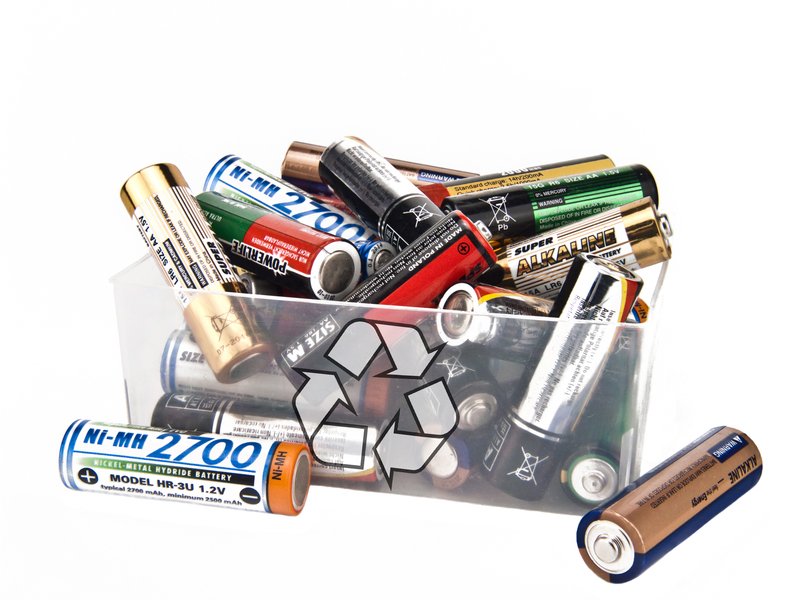Electronic waste, commonly known as e-waste, is a growing environmental concern in our tech-driven world. With the rapid advancement of technology, electronic devices become obsolete at an alarming rate, leading to the accumulation of discarded gadgets, appliances, and accessories. To mitigate this environmental impact, it's crucial to adopt strategies that minimize e-waste. This article will delve into effective tips for reducing e-waste and creating a more sustainable future.
Understand the Impact of E-Waste
Before diving into the strategies for minimizing e-waste, it's essential to understand the significant impact it has on the environment. E-waste contains harmful substances such as lead, mercury, and cadmium, which can leach into the soil and water, posing severe health risks to both humans and wildlife. Moreover, manufacturing new electronics consumes vast amounts of resources, including precious metals and energy, further straining our planet.

Practice Responsible Purchasing
Prioritize Quality Over Quantity
One of the most effective ways to reduce e-waste is by making mindful purchasing decisions. Instead of succumbing to the allure of cheap, disposable electronics, invest in high-quality products that are built to last. Durable devices not only reduce the frequency of replacements but also minimize the amount of e-waste generated.
Opt for Eco-Friendly Brands
Many electronics manufacturers are now embracing sustainable practices. When purchasing new devices, consider supporting brands that prioritize eco-friendly designs, use recycled materials, and implement take-back programs for old electronics. By choosing such brands, you contribute to the reduction of e-waste.
Extend the Lifespan of Your Devices
Regular Maintenance
Routine maintenance plays a crucial role in prolonging the lifespan of electronic devices. Keep your gadgets clean, dust-free, and promptly address any issues. Simple actions like updating software, replacing worn-out batteries, and using protective cases can significantly extend the usability of your electronics.
Upgrade Instead of Replace
When your device seems outdated or sluggish, consider upgrading its components rather than discarding it. Many computers, for example, can be rejuvenated with additional RAM or a new hard drive. This approach not only reduces e-waste but also saves you money.
Donate or Sell Unused Electronics
Find New Homes for Old Gadgets
Rather than letting your old electronics gather dust, consider donating them to charity organizations, schools, or community centers. Many of these institutions can make good use of functional devices that you no longer need. Additionally, several organizations offer free or low-cost refurbishing services to extend the life of donated electronics.
Sell or Trade-In
Numerous platforms facilitate the sale or trade-in of used electronics. Online marketplaces, trade-in programs, and electronics retailers often provide opportunities to sell your old gadgets for cash or store credit. This not only helps you recoup some of the cost but also ensures that the device finds a new owner instead of ending up in a landfill.
Recycle Electronics Properly
Locate Certified Recycling Centers
When it's time to part with electronics that are no longer functional or useful, recycling is the key to responsible disposal. Locate certified e-waste recycling centers in your area to ensure that these devices are handled safely and their valuable materials are recovered for reuse.
Participate in E-Waste Collection Events
Many communities organize e-waste collection events where you can drop off your old electronics for proper recycling. These events are excellent opportunities to dispose of e-waste responsibly and contribute to local sustainability efforts.
Promote Circular Economy Practices
Support Product-as-a-Service Models
The concept of a circular economy revolves around maximizing the value of resources while minimizing waste. Embracing product-as-a-service models, where you rent or lease electronics rather than purchase them outright, can significantly reduce e-waste. These models encourage manufacturers to create durable, easily repairable devices that can be returned, refurbished, and reused.
Encourage Manufacturers to Design for Longevity
Support initiatives and advocate for policies that encourage manufacturers to design products with longevity and recyclability in mind. By pushing for sustainable design practices, you can drive industry-wide changes that reduce e-waste generation.

Educate and Raise Awareness
Raising awareness about the importance of minimizing e-waste is crucial for fostering a collective effort towards sustainability. Share information with friends, family, and colleagues about the environmental impact of e-waste and the steps they can take to reduce it. Advocate for e-waste education programs in schools and communities to ensure that future generations are equipped with the knowledge to make eco-friendly choices.
Conclusion
Minimizing e-waste requires a multifaceted approach that involves responsible purchasing, extending the lifespan of devices, proper recycling, and promoting circular economy practices. By understanding the impact of e-waste and adopting these strategies, individuals can contribute to a more sustainable future. Remember, every small action counts, and together, we can make a significant difference in reducing the environmental footprint of our electronic devices.
